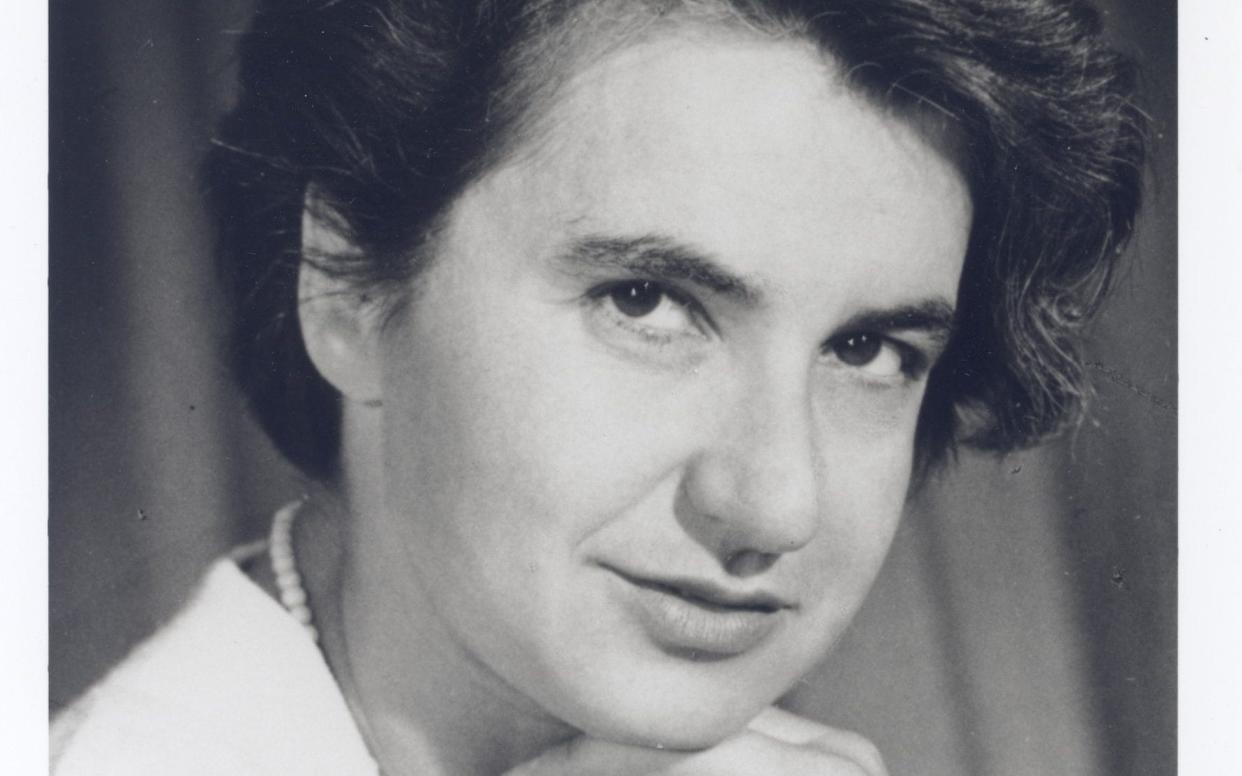Rosalind Franklin Society says sexism is why groundbreaking scientist doesn't have road named after her

She was one of the groundbreaking scientists of the 1950s who played a pivotal role in uncovering the structure of DNA.
But a row has broken out in the leafy grounds of Surrey University over whether chemist Rosalind Franklin should have had a road named in her honour rather than a close.
The Rosalind Franklin Society have accused the local council of being sexist by giving women "second billing", while residents branded it "unfair" that she was denied the same street status as her male counterparts.
So intense was the debate that Guildford Borough Council agreed to hold informal talks about changing its name from Rosalind Franklin Close to Rosalind Franklin Road.
Alan Turing Road, Alexander Fleming Road, Ronald Ross Road and Ernst Chain Road are among the streets surrounding Surrey Research Park which are named after some of the brightest minds in medicine and science.
But only two streets are named after famous female scientists - Rosalind Franklin Close and Daphne Jackson Road.
Professor Jackson was a nuclear physicist who taught at the University of Surrey and became the UK's first female physics professor in 1971.
The fact that Dr Franklin was the only person not given her own road, and was supposedly relegated to a close, was seen as a slight by the Rosalind Franklin Society, which celebrates the contribution of women to science.
Karla Rubinger, director of the society, said: "This is yet another level in which women, at best, get only second billing. We must all be working to change this."
Dr Franklin died of ovarian cancer aged 37 in April 1958, six years after taking what is described as the most important picture ever captured in the world - Photo 51, which showed that DNA has a spiraling or 'double-helical' structure.
While her fellow researchers Maurice Wilkins, James Watson and Francis Crick were awarded a Nobel Prize for their work in 1962, she never received official recognition for her pioneering role in the scientific breakthrough.
Guildford Borough Council told The Telegraph: "We received a suggestion from a resident of the borough to rename the street. We entered into an informal consultation with the University of Surrey as they owned the only residential premises on the street and so are responsible for managing the implications in terms of residents.
"Although the University themselves did not object to the suggestion of changing the name, we did receive an objection from a resident directly to ourselves. Given the problems caused for residents when addresses are changed, we decided not to continue on to a formal consultation on the suggestion to change the name."

Dr Franklin attended St Paul’s Girls’ School in London and went on to graduate from Cambridge University with a chemistry degree.
She had spent four years gaining extensive experience in x-ray diffraction technology in Paris before she began her work on DNA at King's College London in 1951.
During the Second World War she served as a London air raid warden and investigated the physical chemistry of carbon and coal at the British Coal Utilisation Research Association.
A spokesperson for the University of Surrey told The Telegraph: “Rosalind Franklin was one of the greatest scientists of our time and we were pleased that our suggestion to honour her, during the construction of our research park in 1984, was accepted by Guildford Borough Council.
“We’re pleased that this discussion is once again highlighting Rosalind’s achievements, which are the reason we put her name forward when the Council originally named the roads.”

 Yahoo News
Yahoo News 
